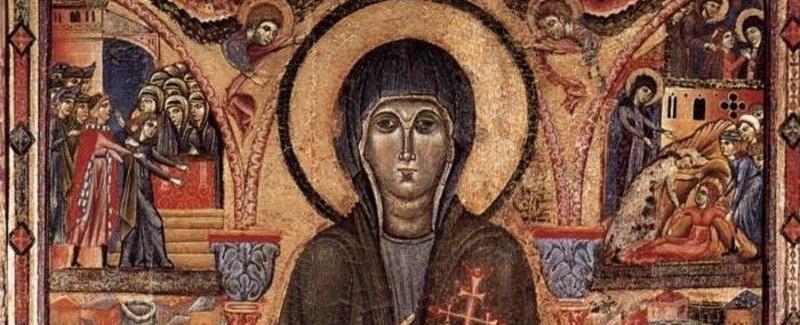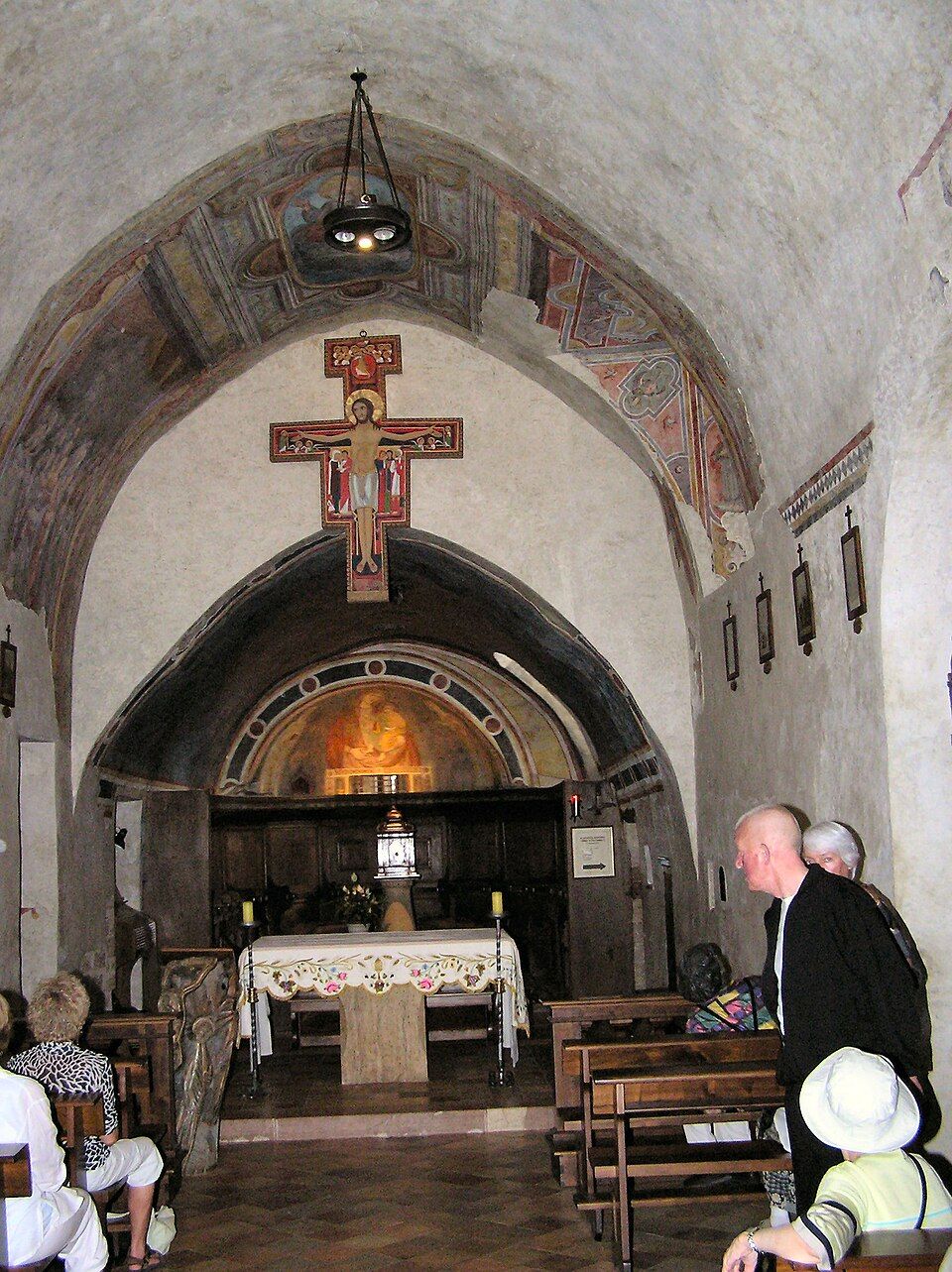Saint Clare of Assisi: First Woman to Join Saint Francis

On August 11, the Franciscan family celebrates the feast of St. Clare of Assisi (1193-1253), the first woman to join Francis and his brothers in forging a new Gospel way of life.
Embarking on a life of penance
Chiara di Favarone di Offreduccio was born into one of the great feudal land-owning families of Assisi who traditionally controlled the area’s politics and economy, although they were forced to spend a few years in the neighboring city of Perugia due to class warfare in Assisi. Several years after her family's return to Assisi in 1205, Clare determined to embark on a penitential life, dedicating herself to prayer and good deeds, including donations of food and alms to the poor, in her family’s townhouse near the cathedral of San Rufino.
Joining Francis and his brothers
However, Clare soon became familiar with Francis of Assisi and his radical new Gospel life; inspired by conversations she had with him, in 1211 (others say 1212) she courageously decided to “leave the world,” abandoning her family, possessions, and social status to join Francis and his brothers at the Portiuncula. Soon, she was joined by several other women, including her sister Agnes, eventually settling at the little church of San Damiano. Francis composed a brief form of life for the small community.

The monastic complex of San Damiano in Assisi, where Clare and her Poor Sisters lived for over 40 years, today houses a novitiate of the Friars Minor. Photo in public domain.
Francis pledged loving care and special solicitude
Francis told them:
Since by divine inspiration you have made yourselves daughters and servants of the most High King, the heavenly Father, and have taken the Holy Spirit as your spouse, choosing to live according to the perfection of the Holy Gospel, I resolve and promise for myself and for my brothers always to have the same loving care and special solicitude for you as I have for them.

The chapel in San Damiano holds a replica of the original crucifix in front of which Saint Francis prayed. Photo by Gunnar Bach Pedersen, Wikimedia Commons.

When Clare's community moved from San Damiano to the new monastery adjacent to the basilica of St. Clare in 1260, they brought with them the large cross that helped inspire Francis's conversion and before which Clare and her sisters prayed for 40 years. It is now housed in a chapel within the basilica of St. Clare. Photo by Dominic Monti, OFM.
Living simply, prayerfully
Clare and her Poor Sisters lived simply and prayerfully at San Damiano for over 40 years. However, Clare had to struggle to maintain her distinctive vision of religious life. In 1219, Cardinal Ugolino of Ostia (later Gregory IX), Papal legate for central Italy, began organizing female penitents under a form of life he developed on a Cistercian model, featuring perpetual enclosure, strict silence, and severe fasting. By 1228, Clare and her community of San Damiano were placed under these regulations.

A view of the cloister within San Damiano in Assisi. Photo by Dominic Monti, OFM.
Gaining approval for her own Rule
Clare accepted some of these features but continued especially to champion a life unencumbered by property ownership, supporting themselves by the work of their hands. Finally, Clare was able to gain approval for her own Rule which reiterated her basic values shortly before her death in 1253. Clare was canonized just two years later, in 1255.

The Basilica of Santa Chiara in Assisi, built to house Clare's remains after her canonization in 1255, was dedicated in 1260. At this time, the Poor Clare community moved from San Damiano to a new monastery adjacent to this basilica. Photo by Dominic Monti, OFM.

Fresco of Saint Clare and nuns of her order, Chapel of San Damiano, Assisi. Clare thought of herself always as "with my sisters."
Choosing the things of heaven
Clare summarized the vision that animated her life to St. Agnes of Prague:
If so great and good Lord, then, on coming into the Virgin's womb, chose to appear despised, needy, and poor in this world, so that people who were in utter poverty and want, suffering hunger for heavenly nourishment, might become rich in him by possessing the kingdom of heaven, then rejoice and be glad! . . What a great and praiseworthy exchange: to leave the things of time for those of eternity, to choose the things of heaven for the goods of earth, to receive the hundred-fold in place of one, and to possess a blessed and eternal life!
May all Franciscans, especially our Poor Clare Sisters, continue to be inspired by the life and example of our holy Mother.
Main image: The monumental wooden altar piece or dossal, depicting scenes from the life of Clare (c.1280), hanging in the basilica of St. Clare in Assisi (detail).
Dominic Monti, OFM
Professor of Franciscan Research in the Franciscan Institute of St. Bonaventure University
Dominic V. Monti, OFM, is a Franciscan Friar of Holy Name Province (USA) and currently professor of Franciscan Research in the Franciscan Institute of St. Bonaventure University. He devoted the greater part of his ministry to teaching the History of Christianity, in particular the history of the Franciscan movement. He has contributed two volumes to the Works of St. Bonaventure series and is author of Francis & His Brothers, a popular history of the Friars Minor.

